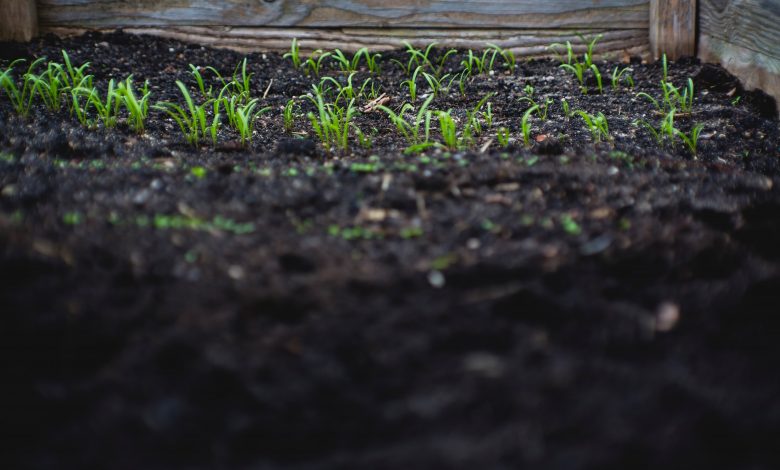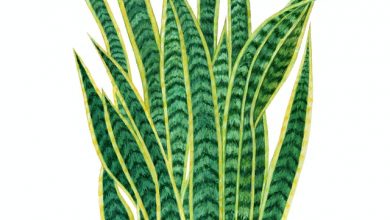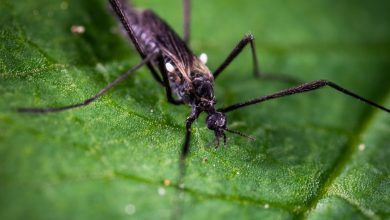Best Fertilizer Alternatives for Plant Growth

You don’t need a green thumb to know that water and sunlight are essential for plant growth. While these are essential elements, they don’t account for the complete package of growth requirements for a plant.
Remember, plants can create their own food via photosynthesis, using only carbon dioxide and water. This is a complicated process that other organisms, such as humans, can’t do. So it’s natural to expect that plants have more comprehensive needs than simply a little water and sunlight.
Carbon, hydrogen, and oxygen are all important to a growing plant, but elements, such as nitrogen, potassium, and phosphorus, are arguably even more in demand.
The oxygen, hydrogen, and carbon are easy enough for the plants to get since you can find such elements in the air and water. Since the earth has a composition that consists of mainly water and air is everywhere, these are easy enough to get.
The phosphorus, potassium, and nitrogen are a bit harder to come by, and this is where fertilizer comes into the mix. Most packaged fertilizers contain a combination of the three, as well as some additional ingredients.
While standard packaged fertilizers do a great job in helping plants to grow, there are numerous reasons that you may not be able to get your hands on any. Even if that’s not the case, you may want an alternative to a standard fertilizer that serves the same purpose. This article is a look at some of these alternatives and how they can benefit both you and your plant.

Bone Meal
The first fertilizer type on the list is bone meal. This is obtained from grinding animal bones into a fine powder after they have been steamed. When the process is completed, you are left with a substance that is rich in many of the essentials that plants need. Note, however, that you don’t get the complete assortment of macronutrients and other elements that a plant needs to thrive.
The main purpose of bone meal is to ensure that plants receive an adequate amount of calcium and phosphorus. The process of photosynthesis that was described earlier heavily depends on phosphorus to get to completion. Calcium, on the other hand, is necessary for cell formation and for helping plants to retain their elements and move as necessary. Now, you may be wondering why phosphorus needs to be provided by a fertilizer when it’s a natural element in soil. The problem with the amount that’s in the soil is that it’s not enough for the plants to thrive. It must be supplemented by another source to provide the required amount.
One of the best things about bone meal is the speed at which it breaks down. This happens very slowly, which means that the plants don’t get a quick burst of nutrients that runs out in no time. Instead, there is a long break down period, which gives the plants a steady flow of calcium, phosphorus, and other nutrients.
As you may know, standard packaged fertilizers can become a hazard to plants when too much is used. One of the worst possible effects is the burning of plants, which can be just as dangerous as root rot in extreme cases. Therefore, there is usually a metric for how much fertilizer you should apply to avoid adverse effects. There isn’t typically much wiggle room with such metrics, so you need to abide by the measurements.
This problem isn’t a factor with bone meal. Even if you do apply too much, all you’re doing is giving the plants an increased supply of nutrients. Be that as it may, however, you should still try to avoid overdoing it, as you can cause some serious damage to the plants.
You should note that bone meal is known to be very dangerous to dogs, so if you have dogs that are going to be active in the area, you may want to consider another fertilizer alternative. When large amounts of bone meal are consumed, there’s the possibility for a dense mass to form within the stomach. The only way to get rid of the said mass is via surgery.
Using bone meal is not very hard. There are typically instructions included with commercially manufactured sources. Even if you aren’t using a commercial source, there isn’t anything to worry about, since there are multiple ways of effectively using the fertilizer alternative.
One of the most basic ways to use it is to combine it with soil prior to planting. About five or six pounds of bone meal per 100 square feet should do the trick. If you don’t want to do it for the whole ground, you may also do it on a per plant basis. In this case, all you need to do is place two tablespoons into a hole prior to planting. Of course, you can also use bone meal on new plants. To do so, simply sprinkle a half cup on roots before the appearance of spring buds.
Bone meal contains cow by-products. Therefore, many people have expressed concerns about the potential presence of mad cow disease. There’s no need to worry about this, however, as there are regulations in place to protect you. Imports of cattle products from affected countries are prohibited in the United States.
Additionally, the process that was described above for the manufacturing of bone meal kills any microorganisms that could contribute to the occurrence of the disease. Sometimes, these regulations and scientific guarantees aren’t enough for everyone. So if you’re still worried about cognitive degeneration, then you may simply use a mask as you handle the product. Remember that this disease can only spread through consumption and inhalation.

Cottonseed Meal
The second fertilizer alternative on the list is another slow-release variety. As you can infer from the name, this product comes from cotton. More specifically, it is a by-product that the cotton production process yields. After the cotton is taken from the cottonseed hull, extraction of the seed oil takes place. What remains behind is used to make the meal that becomes this fertilizer.
Of course, the main concerns here are macronutrients, such as nitrogen, phosphorus, and potassium. Cottonseed meal is a natural source of all three, so there’s no need to seek out any additional supplements.
The best time to apply cottonseed meal is prior to planting. The idea is to create a welcoming environment for plants and producing beneficial bacteria. The idea is to replace any trace minerals that have been depleted and to treat soil that exhibits exorbitant pH levels. The n-p-k ratio of cottonseed meal is 6-0-4. This metric gives the ratio of nitrogen, phosphorus, and potassium, respectively.
When you put cottonseed meal into your soil, it naturally results in a better texture. Additionally, there is a higher humic acid content, which is a staple for adequate plant health and growth. Sandy and light soil types tend to be thin, which means that the potential for water retention is very low. Applying this fertilizer improves the body of such soil types, which means that they become more conducive to planting.
While you can use the fertilizer on flowering plants, you shouldn’t apply it to vegetable seedlings that are fast-growing. You can apply it to these vegetables, but you need to wait until they are past the seedling stage. Like bone meal, cottonseed meal is both slow-release and safe. This means that not only does it provide a consistent supply of nutrients, but it also doesn’t burn plants if the quantity is too high. If you want your vegetables to grow faster and bigger, then this is the fertilizer type that you need.
The amount of cottonseed meal that you apply is dependent on the kind of soil that is present in the garden. Remember that the idea of the fertilizer is to create better conditions for the plants. While this takes quite a bit of work with some soil types, others are much more conducive to plant growth. If the soil is healthy, that means it contains trace nutrients and other helpful compounds.
This means that there is a basic level of nourishment present. If you have such soil at your disposal, then you need no more than one or two pounds of fertilizer per hundred square feet.
Your garden may not be the poster child for healthy soil, but even so, it may not need too much help. In this case, then you can use a little more. Throw in about four to six pounds of fertilizer per 100 square feet. This allows your soil to get the little boost that it needs without your going overboard.
Of course, there are those gardens that are in a terrible state. This could be because of the soil type or simply because of neglect. Whatever the case may be, a lot more assistance is required in this regard. Therefore, you need a lot more cottonseed meal to help to bring the soil to a state that is habitable to the plants. You may find that you need a number between ten and twelve pounds per 100 square feet. The good thing about using this fertilizer alternative is that it doesn’t just provide a temporary solution. There’s a permanent effect that helps the soil to progressively become better. Note that this does require some effort on your part to keep things in check.
If you’re just growing a lawn, as opposed to planting some flowers, only eight to ten pounds of cottonseed meal are required per 100 square feet of lawn. However, it must be well distributed to achieve the desired effect. Therefore, you need to mix it properly, after which the soil must go through the processes of leveling, seeding, packing, and then watering. The watering must be done as thoroughly as possible for the best results.
For those of you that have impressive lawns, all you need to do is sprinkle a bit of the cottonseed meal around to be safe. Remember that you should always test your soil before you decide how much fertilizer to apply. While there are no downsides to applying more cottonseed meal than is required, you should try to avoid doing so.
Remember that this fertilizer comes from the cotton manufacturing process. This means that care for the cotton trees that were used is a concern. Many farmers use pesticides to ward off pests, but these can be harmful to plants. Therefore, you need to ensure that you purchase pesticide-free cottonseed meal. This contributes to the safety of your plants and your own peace of mind.
If your plants prefer to live in alkaline conditions, then you may want to consider another alternative to use as a soil conditioner. This is because cottonseed meal naturally makes soil more acidic. Examples of plants that prefer alkaline conditions are the boxelder and Japanese barberry.

Alfalfa Pellets
The alfalfa is a perennial plant that is known for its taproot system. The system is characterized by regeneration, adaptability, and a high output. The roots are known to contain high amounts of potassium, phosphorus, and nitrogen. Of course, this is the optimal combination of macronutrients for anything that is considered a fertilizer.
Just by planting alfalfa, soil quality is improved. Not only does it result in an increased crop yield, but users also find that there is a tremendous increase in the fertility of the soil in which it is placed.
While the plants demonstrate tremendous potential for improving soil quality, you can’t exactly use plants as fertilizer. Of course, you could plant alfalfa plants wherever you want to improve the soil quality. However, that may not be feasible. This is the reason that they are used to create alfalfa pellets, which are then used as fertilizer.
The pellets are made by crushing the alfalfa plants and their roots. Of course, this makes for a very messy crushing job, and so a high moisture crusher is used. Normal crushing mechanisms may struggle because of the wetness and other substances that may be present in the mud that comes with the roots. The high moisture crusher can easily deal with and granulate all the materials.
During the grinding process, additional elements tend to be added, such as manure from horses, cows, sheep, and chickens. The composting process takes anywhere between seven and fifteen days to reach fermentation.
Alfalfa fertilizer is known for its incredible ability to foster plant growth. Roses are especially receptive to this fertilizer alternative.
While the ratio can vary depending on the supplier, alfalfa generally has an n-p-k ration of 3-1-3. The nitrogen content is perfect for growing plants, and there are numerous other important minerals, such as sulfur.
The soil fertility improvement that is synonymous with alfalfa pellets cannot be overstated. This is because there is an immense offload of organic substances into the soil. This allows for the forming of new aggregates in the soil and the improvement of the presence of nourishing substances. In the end, the soil has better chemical and physical properties, which makes it more hospitable to plants.
As you know, there are beneficial microorganisms to plant growth. Alfalfa pellets contribute to the presence of these microorganisms, as there are adequate sources of nourishment. This all comes from the alfalfa stalk that contains sugars, fiber, amino acids, and protein.
As beneficial as these pellets can be, it’s important that you read the label before you make a purchase. This is because many of them contain weed seeds. Of course, this can spell trouble for many gardens, so be wary of the possibility.
Application of alfalfa pellets should take place with a mixture of two to five pounds per 100 square feet of garden.

Bat Guano
Bat dung or bat guano is a natural fertilizer that people have been using for centuries. It is quite adept at improving the structure of your soil and the growth of your plants.
You should know that, unlike some of the other alternatives, this type of fertilizer is not on the cheap side of the spectrum. Be that as it may, however, if you can fit it into your budget, then you should, as the benefits make it worth the price tag. There are two different n-p-k ratios available, which depend on the mix of macronutrients that you want. If you want high phosphorus, then you can get a ratio of 3-10-1. You also have the option of getting the high nitrogen variety that has as 10-3-1.
Whenever you’re trying to achieve fast green growth, this is one of the best alternatives on the market. This is the reason that it is so commonly used for lawns by people who are willing to make the required investment. The macronutrient content is supplemented by a slew of micronutrients that plants also appreciate.
Soil quality improvement is one of the biggest things that this fertilizer alternative does well. The texture of the soil that it is applied to tends to improve in weaker areas. Loose soils tend to be better held together, and dense soils tend to get lighter when they are exposed to bat guano. This is a benefit that is very long-lasting.
Many of the inorganic fertilizers on the market are readily latched from soil, which makes them useless in certain conditions. Bat guano is much harder to displace, which means that it provides its benefits to the soil over a longer period.
You can also find microbes in bat guano that are very beneficial to plants. Studies have shown that there are bioremediation properties present in the compound. This means that soils that were previously thought to be toxic can be cleansed simply by applying some of it. Additionally, water retention and air space potential are increased when bat guano enters the mix.
A slow decomposition process can be a problem in the world of gardening, and bat guano is the perfect thing to speed up the said process. This means that you can get greater control over dangerous nematodes and soil diseases.
The form that bat guano takes as a fertilizer is much different from the natural state of the bat droppings. After the guano is harvested, it is ground into a powdered form, which makes it easier to package and use on plants.
The guano is versatile in the sense that while you can place it directly in the soil, you can also turn it into a liquid form, which is easy to apply to foliage. If you have an irrigation system set up, you can also use that to disperse it. Note that, when you apply bat guano to foliage, it also acts as a vaccine against fungal diseases that would otherwise damage your plants.



